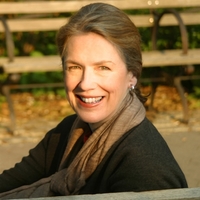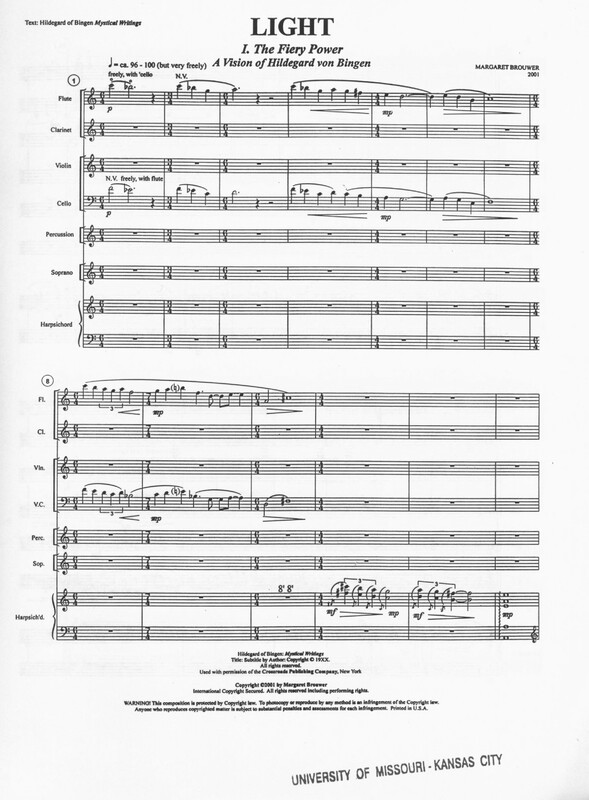Light
Item
-
Score title
-
Light
-
Composer
-
Margaret Brouwer
-
Program note
-
This work was written for harpsichordist Jeannette Sorrell, soprano Sandra Simon and The Cleveland Museum of Art honoring their acquisition of a German style harpsichord (after Michael Mietke) built by Bruce Kennedy of Amsterdam. In writing for these outstanding early music performers from Apollo’s Fire, and for the harpsichord, it was the perfect opportunity to draw inspiration from earlier centuries. My intent was to create a collage within my own music of texts and music from the twelfth to the mid-twentieth century.
The twelfth century nun, Hildegard von Bingen, was an important religious figure whose mystical visions of God are filled with glowing and unique imagery. A few sentences from one of these visions are used as the text in the first movement. The English translation from Latin (by Robert Carver) is used with permission of the Crossroads Publishing Co. In Nederlandse Licht, I have quoted briefly from two musical works that come from my own Dutch heritage, one secular and one religious. Since the overlay and mixing of the secular and the religious is so prominent in Dutch history, this combination seems right. I have picked the chanson, L’autre d’antan, by Netherlands composer Johannes Ockeghem (ca.1425 – 1497), and De XXVII Psalm, God is mijn licht, mijn heil, wien zou ik vreezen? The latter is taken from a Dutch part-book format of the Psalms (Het Boek nevens de Gezangen bij de Hervormde Kerk van Nederland, 1773), which has been handed down in my family. Even though both quoted works were originally vocal, this movement features the harpsichord and does not use voice. The final movement, Atoms, mixes historical recitative style with my own contemporary musical language. The vocal text is a statement that physicist Richard Feynman made in a 1961 lecture to undergraduates at Caltech, as found in James Gleick’s book, "Genius". The light, sun, water, and stars of Hildegard and Psalm 27 seem in some mystical way to combine very well with the 20th century understanding of atoms.
 Margaret Brouwer
Margaret Brouwer

